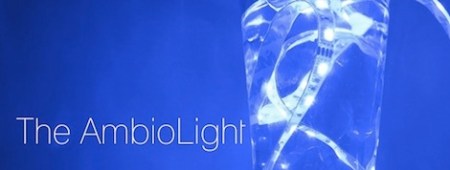
This Kickstarter campaign, the AmbioLight, brings RGB LED strips to the masses. The only problem is that some of the backers discovered this RGB LED strip is already on the market. Internet denizens are now frothing at the mouth, complaining the designers of the AmbioLight, “haven’t designed anything,” and are, “just reselling parts which [AmbioLight] put together at a higher cost than other products on the market.”
A few backers of the AmbioLight have found what they think to be the original product, an RGB LED strip produced by ELCO Lighting. Comparing the picture of the ‘ballast’ on the AmbioLight Kickstarter to the ELCO controller raises even more suspicions about how involved the AmbioLight team was involved in the design of their product.
Even if the AmbioLight is simply a repackaging of an already existing product, that doesn’t make it against the rules of Kickstarter. I’ve even contributed to Kickstarter campaigns just to get a difficult-to-source component. Still, given the vitriol of the AmbioLight’s comments page, Kickstarter contributors don’t seem to appreciate taking an already available product and reselling it as your own.
What say you, Hackaday reader? Is it right for the AmbioLight team to do this?
EDIT: Kickstarter suspended the funding of AmbioLight a few hours after this was posted.
















